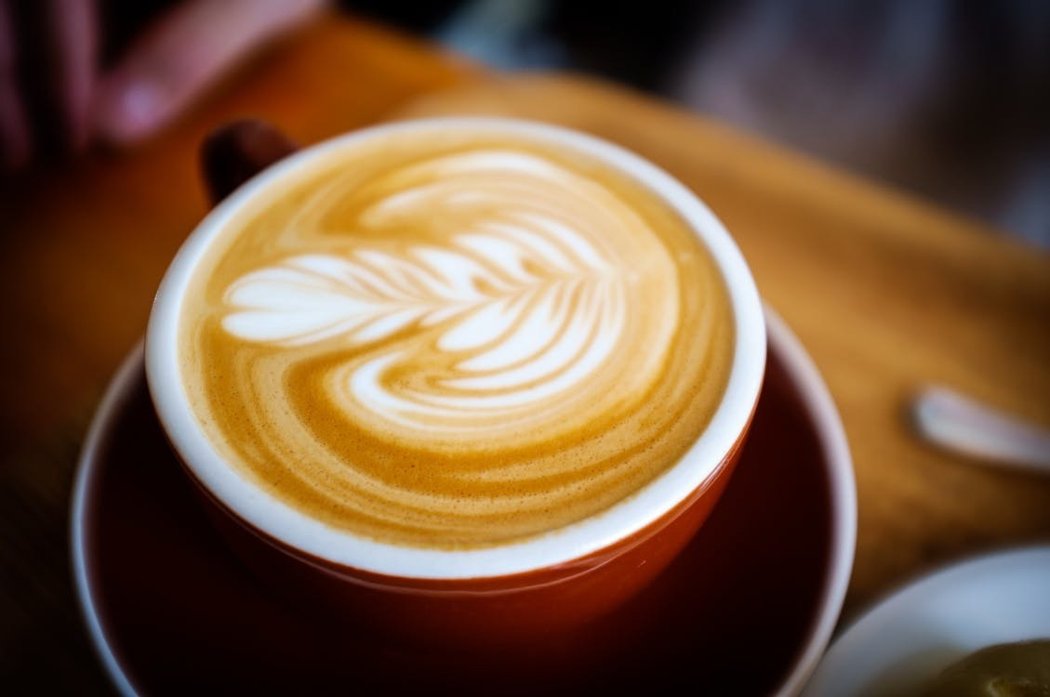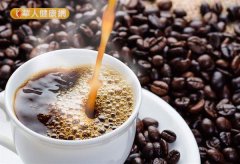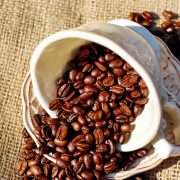Coffee complex

For professional baristas, please follow the coffee workshop (Wechat official account cafe_style)
A few days after Legion Day was published in the Binhai Times, I received a reader's Wechat message on my phone, "that, Flat White, is it good?"
I dug up the published article and found that the editor also affectionately added to Flat White, brackets, a kind of Australian coffee. When it comes to Australian style, it is estimated that the kiwi of New Zealand (jokingly called by Australians to New Zealanders) will protest greatly. They all run the cafe Flat White in Beijing. But on this issue, Aussie (what New Zealanders jokingly call Australians) must be unyielding, because coffee is their culture and their soul.
Before I met my husband, I didn't know much about Australians, limited to big shorts and flip-flops, let alone associate them with things like coffee. However, when I found that the daily life with him was coffee plus everything else, I began to understand the Australian obsession with coffee. In the morning, before my eyes were fully opened, I wandered sleepwalking to the coffee area of the kitchen. Pour beans, grind, boil water, brew coffee, soak in the sun and music, this set of movements began with a strong sense of ritual. The shrill sound of the bean grinder scratches jazz and usually heralds the beginning of the day. My husband's breakfast is cold milk and granola (a kind of crispy cereal), which remains the same for ten thousand years, and it takes about three minutes from preparing the meal to eating. The next 45 minutes is time for coffee tasting. Surf the Internet with coffee, chat, read newspapers, read the news, sit in a daze in the sun, and enjoy it for a minute. Several times, because of getting up early for meetings, I got up in the dark, but I still didn't have time for breakfast, and then I complained to me after work that the time for drinking coffee in the morning was shortened by ten minutes, making me feel bad all day. If you want to do a good job, you must first sharpen its tools, so my kitchen is full of all kinds of bean powder, Italian, Turkish, concentrated, low-cause, and all kinds of pots and instruments. French pressure, mocha, hand flushing, weighing, temperature measuring and milking.
What I still remember is that on one occasion, because of taking medicine, the doctor recommended that caffeine intake be suspended for three weeks. After hearing the bad news, he, who had always been blindly optimistic, remained in the doldrums for two or three days, looking like the end of the world, withering his head and drooping his head, so that I had to play tricks with Fresh Juice every day, just to make him feel better. At lunch on the day of withdrawal, my husband took a sip of the ultra-small cup of Turkish coffee he had spent half an hour making, accompanied by a sandwich and sighed contentedly, "Coffee is our life!"
In Australia, a husband who lives with coffee every day is by no means a special case, but at best a typical one. Coffee culture originated in Europe and was not formally introduced to Australia by a large number of immigrants from Italy, Greece, Turkey and other countries until the 1950s. Unexpectedly, it was deeply rooted and carried forward in this land in a short period of time. The expansion of Starbucks, an international coffee chain in the United States, has so far been very crazy, but it has only failed in two countries, one is Italy, the birthplace of coffee, and the other is Australia, which has a fondness for coffee culture. this is also enough to make the Australian people proud, and it fully shows that Australians attach importance to coffee and the strict standards for good coffee.
Australia's small cafes are all over the streets, occasionally there are some small chain stores, such as Gloria Jean's, Coffee Guru and so on, and what is more common is independent niche independent brands, each with its own unique name, unique layout and unique taste. According to my husband, most people in Australia have their own favorite daily coffee shop, just like you Chinese have a favorite breakfast stall. It is precisely because of this that Starbucks' industrial design, stereotyped layout and fast-food taste are difficult to win the favor of the Australian people. Xiao Aojiao is a typical portrayal of this coffee culture. The simple shops hidden in street corners and alleys often contain a master who can make unusually fragrant coffee. Holding coffee in oversized paper cups with green Logo like Starbucks would be considered gluttonous and tasteless. Minimalist and low-key ability to highlight the luxury of the content, the solid color of the small take-out cup was coffee brother casually doodled with a marker outside of a "Mocha" (ordered coffee), without it. It is not until you open the lid that you will find that the strong fragrance is accompanied by a smiling face with a bowler hat and a moustache. Quite a bit of "things to brush clothes, hidden merit and fame" artistic conception.
When you write about Australian coffee culture, you have to mention Melbourne, the spiritual center of this culture (Spiritual Center). According to legend, a typical Melbourne man is dressed in black with a cup of coffee in his hand without any other color. I hallucinated this "isolated" image in my mind, feeling that it can speak for the Australian coffee culture, which is alternative, minority, unique and mysterious. Laigon Street (Lygon St.) in Melbourne is an unusually authentic and prosperous coffee culture because it is inhabited by immigrants from southern Europe. There are at least hundreds of cafes here, each with its own characteristics, nicknamed "Little Italy (Little Italy)", and it is also a must for backpackers to make a pilgrimage to coffee culture. In fact, it can be said that the whole of Melbourne is made up of streets and alleys covered with graffiti walls and small cafes, with clusters of coffee drinkers sitting on the side of the street in a daze as if they had crossed to Europe. The annual International Coffee Expo and flower-drawing competition held in Melbourne proclaim that the craftsmanship of brewing coffee here is superb, profound and serious.
At this point, I suddenly want to go to the library to look through the The Age (an influential Australian publication). It is said that they wrote two articles after Starbucks lost Maicheng: one is called "American Coffee Culture has been baked", and the other is called "Starbucks memo: try selling Ice to Eskimos next time".
Important Notice :
前街咖啡 FrontStreet Coffee has moved to new addredd:
FrontStreet Coffee Address: 315,Donghua East Road,GuangZhou
Tel:020 38364473
- Prev

Burmese coffee beans are popular in European and American markets
Myanmar's Federal Daily reported on May 10 that according to the Burmese Coffee Association, Burmese coffee beans were mainly sold to Japan and other Asian countries and regions in the past. In the last fiscal year, Myanmar exported 18 tons of coffee beans to the United States twice. However, orders came at the beginning of this fiscal year, and orders in both the European market and the American market have increased compared with previous years, and the prices offered are also higher.
- Next

The fragrance of coffee and wine will make you come to the exhibition where you can eat and drink.
Professional baristas please follow the Coffee Workshop (official Wechat account cafe_style) the 18th Xi'an International Hotel equipment and supplies Exhibition opened the 18th Xi'an International Hotel equipment and supplies Exhibition, which was jointly sponsored by Shaanxi Tourism Association, Shaanxi Tourism Hotel Association and Shaanxi Hotel Association, yesterday in Qujiang International Convention and Exhibition Center. In recent years, Belt and Road Initiative
Related
- What ratio of water temperature and ground does the smart cup method use to press coffee? The difference between brewed coffee and filtered coffee?
- What is the standard process for the purpose of coffee cup testing? What is the difference between hand-brewed coffee and cup testing?
- How to use hand-brewed coffee paragon small golden balls? How does cold coffee lock in the aroma of coffee?
- Is American coffee black? What is the difference between American coffee and drip coffee?
- Unexpected! Well-known tea beverage brand Lele Tea will withdraw from the Zhengzhou market!
- Starbucks enters the fashion and beauty industry?! Netizen: Give me an ice American eye cream
- Why can American refills for free? The difference between Americano and American drip pot coffee
- Being chased out of the rain in front of Starbucks?! Store: Sheltering from rain under umbrellas poses a safety hazard
- The white moonlight has changed?! Lucky launches "Big Winter Pear American"
- Hand-brewed coffee three-stage method, high-sweet and universal brewing method to share! What does the high sweet water level of hand-brewed coffee mean?

